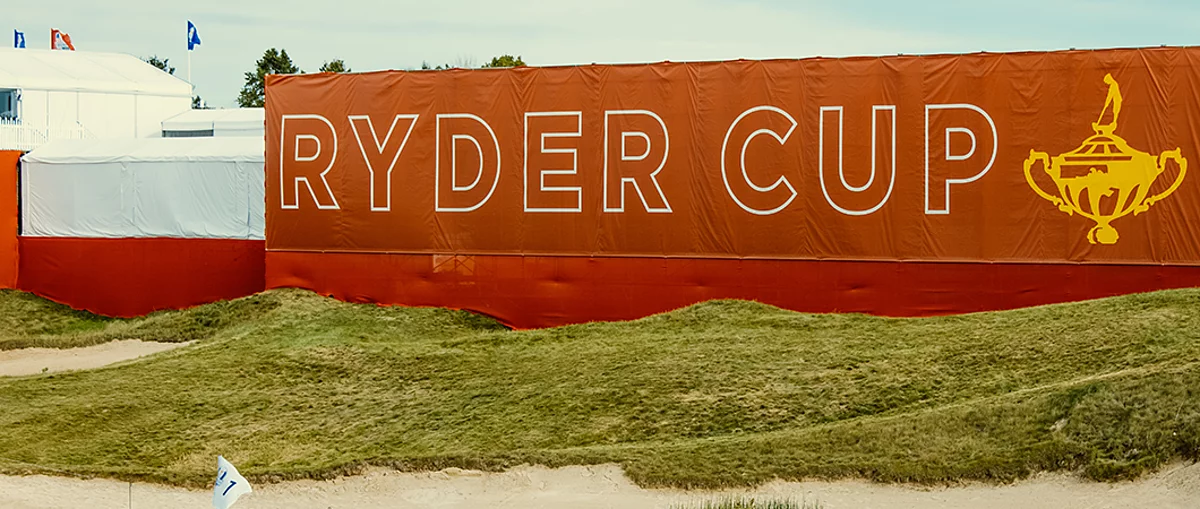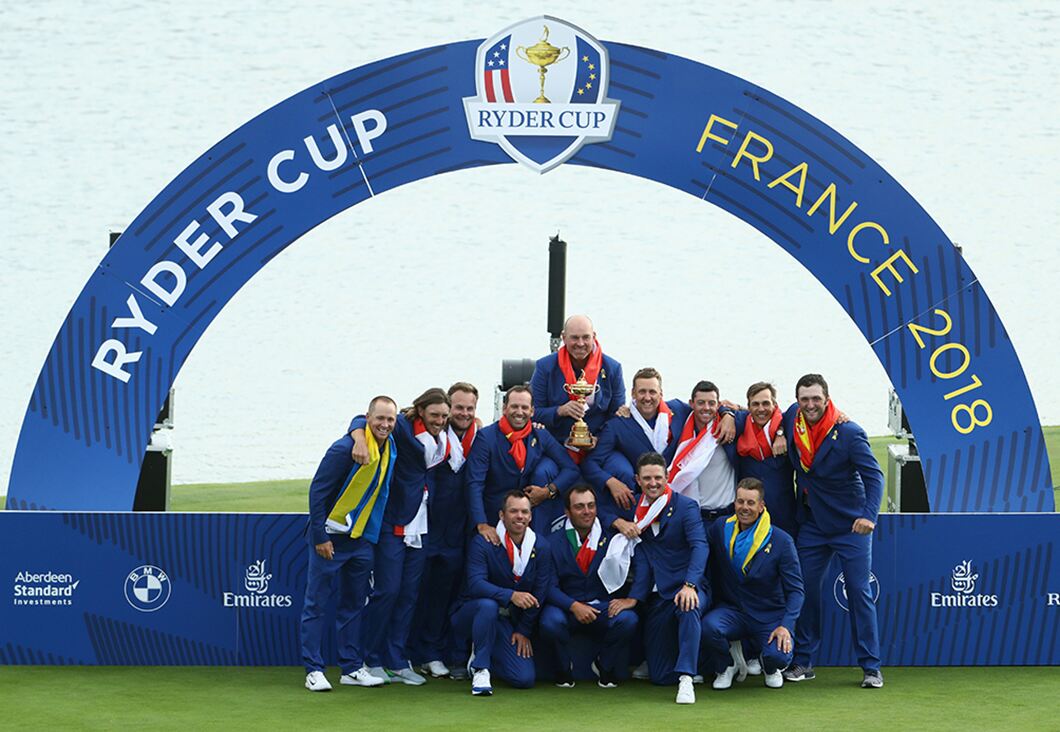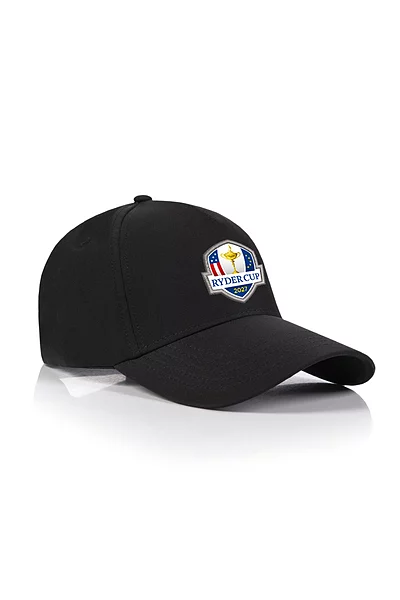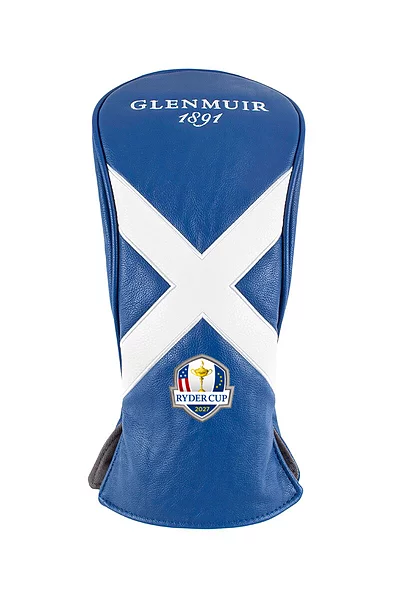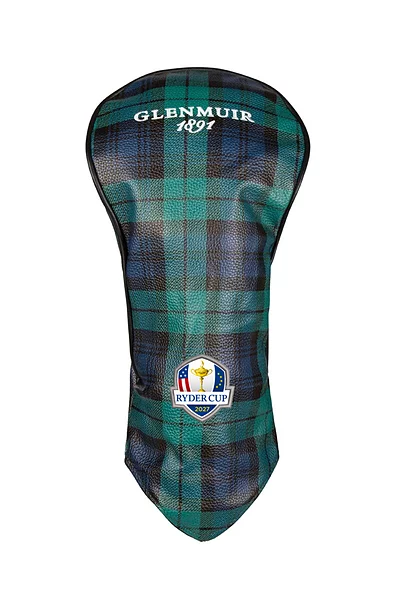Table of Contents
- What is the Ryder Cup?
- The history of the Ryder Cup
- How the Ryder Cup works: The basics
- The Ryder Cup Schedule of Play
- Qualifying for the Ryder Cup
- How opponents are chosen for matches
- Format changes
- Results
- Ryder Cup Traditions
- Preliminary events
- The Solheim Cup
- Key Takeaways
- FAQs
- Look part of the winning team with Glenmuir
- Final thoughts
The Ryder Cup, or to give it its full title, The Ryder Cup Matches, can be a tricky event for the golf layman to grasp. Even the seasoned golfer might have a spot of trouble accurately explaining the rules and format of one of the most exciting events in the golfing calendar.
Representing your country as part of Team Europe or Team USA is a huge honour for a golfer. Yet, only a lucky 24 get chosen for the unique privilege every other year. And every single fan of golf will have at least heard of the famous tournament.
But, what exactly is the Ryder Cup, and how does it work?
In this comprehensive guide, we've got all the answers, including the Ryder Cup scoring, the format of the game, the different types of match play, all the winning times from 1927 right up to the present day and much, much more.
What is the Ryder Cup?
When the competition was first established, the competitors were originally Great Britain and the USA. By 1979, the Cup had changed, allowing players from Continental Europe to join. Thus, the team became known as Team Europe.
The history of the Ryder Cup
While the very first Ryder Cup took place back in 1927, the Cup's origins can be seen shortly before that, in 1921.
The story is interesting: In 1921, the illustrious magazine, Golf Illustrated, stated to the PGA (Professional Golfers' Association) that the association should consider sending over a dozen American golfers to Great Britain in order to crown the very first US champion of the Open.
The British newspaper, The Times, soon got wind of this and counter-suggested a golf match between the best of British and American golfers.
The game occurred at Gleneagles in Perthshire, Scotland, with the British team trouncing Team USA with a 10.5 - 4.5 win. There was another unofficial match in 1936, but by 1937, the Ryder Cup was official and in full swing. Since then, every 2 years, the golfing community has been hooked on the hugely exciting and unpredictable spectacle.
By the 1970s, the Ryder Cup was beginning to lose its appeal with audiences, largely due to the predictable nature of the matches.
Up until a change in 1979, the United States were the winning team in almost every competition. However, in 1979, the rules were changed, where the British team became Team Europe, and the games quickly started to become much more edge-of-your-seat.
Famous golfing battles at the Ryder Cup
War by the shore
Miracle of Medinah
Ian Poulter for Europe had managed to hole 5 birdies on day 2, which saw him bring the score to 10-6 to the United States.
By day 3, however, things were to take an even bigger turn. A series of truly stunning singles saw the Europeans stride to victory with a 14 ½ - 13 ½ victory.
How the Ryder Cup works: The basics
Teams and selection
There are 2 teams: Team Europe and Team USA. Each of these teams has 12 players, making a total of 24 players taking part in the Cup. Each side has a team captain; both captains are chosen by both the PGA of America and the European Tour. It is then for each of the captains to decide on who they want to be their assistant captains.
The rest of the team is chosen via a mixture of performance according to European and World Points Lists and captain's picks, with 6 players coming from the points rankings, and 6 being chosen by the team's captains.
Ryder Cup format
28 matches take place over the 3 days of the Ryder Cup.
There are 3 different types of match play:
-
Foursomes
-
Four balls
-
Singles
Foursomes are when two golfers from each side play against two golfers from the other team, hitting tee shots. The team will hit alternate shots with each side using only one ball throughout play. The lowest score wins.
Similarly, four-ball matches are when two golfers for each side compete in a four-ball format; every Ryder Cup player will have his own ball and play with that same ball throughout this match. So, there are four balls (each player's own ball) on every hole.
The pair who has the lowest score wins that particular hole.
The last day of the Ryder Cup sees all players having the opportunity to get on the course in singles matches. The lowest score wins. If the scores are tied, half a point is awarded.
Ryder Cup scoring and earning points
The team who won the previous Ryder Cup will need at least 14 points to win the Ryder Cup this time around; the team that lost the Cup on the previous occasion need 14 1/2 points to win the Ryder Cup outright.
Ryder Cup scoring in more detail
Although we've briefly outlined how the scoring works, the Ryder Cup scoring isn't as complicated as one might at first think.
Let's delve a bit deeper.
The Ryder Cup scoring works as follows:
The match-play format is scored hole-by-hole. A team or single player will win the hole if their posted score is less than their opponent. If the score turns out to be level on the hole, the overall score will remain the same.
When a team or player is leading the match by more than 1, the score is considered 2 up, or whatever the margin may be. If there is such a lead where it is impossible for the other side to win or at least catch up, the match can be finished before the 18 holes are out.
But, what if there is a draw?
This theoretical question became not so theoretical in 1989 when both Team USA and Team Europe each had 14 points.
Team Europe was declared the winners. Why?
Because they had won the Cup outright at the previous competition in 1987. So, if there is a draw, the defending champions will be declared the winners and take home the Cup once again.
The Ryder Cup Schedule of Play
The Ryder Cup takes place over a period of 3 days. There is a strict daily schedule for each of those days. Days 1 and 2 will usually take place on a Friday and Saturday, with the 3rd and final - and arguably the most exciting - day taking place on Sunday.
Let's look into each day in a bit more detail.
Day 1
On the starting day of the competition, there are a total of eight matches: four foursomes and four four-ball.
One of these formats is played in the morning, while the other is completed in the afternoon. It is the decision of the home team as to which order these formats are played.
Day 2
On the second day of the Ryder Cup, as with the first day, there are four foursome matches and four four-ball matches. However, it is not the home captain who gets to decide the order of play; who plays in the morning and afternoon is in the same order as the previous day.
As this is the last day of doubles match play. Up until now, there have been four doubles sessions completed over 16 matches.
Day 3
Day 3 is usually considered the most exciting and unpredictable day of the entire 3-day event. The day consists of a dozen singles matches. Both the Europe captain and the USA captain will turn in their orders of play without being aware of the order the opposing time is playing.
Unlike the first two days of play, every golfer in a team will play on day 3 as there are 12 singles matches and 12 golf players per team.
The team with the biggest number of points after the match wins the point for their team in the last of the Ryder Cup scoring. During the singles matches, the lowest score on each hole wins the hole.
The total amount of matches played is 28 over the 3-day competition.
Qualifying for the Ryder Cup
Selecting the players for Ryder Cup matches has been changed and adapted over the years since the very first Ryder Cup match in 1927. When the competition first started, players were chosen by a selection committee that would oversee the addition of each player to either team. As the Cup progressed, the selection process was to become solely performance-based.
The current selection system works where a small sample of golfers are chosen by the team captain; these players are referred to as Captain's Picks or Wild Cards.
How opponents are chosen for matches
The Ryder Cup format states that neither team captain is to be made aware of the golfers the other team is going to play, as well as the order in which they are going to play. Match-ups are, therefore, random.
In terms of doubles sessions, both captains are able to decide which golfers to pair up, which will sit in and in what order the players will tee off.
Format changes
The format for the Cup has changed to varying degrees over the years.
Below are some of those most notable changes to date:
-
In 1927, the year of the first Ryder Cup, it took place over 2 days and had 12 points in total at stake. There are four foursomes and eight singles.
-
By 1961, things were starting to change; that year, matches were doubled to 24.
-
Two years later, in 1963, four-balls were introduced. The tournament was also extended from 2 days to 3.
-
As of 1981, the same format has been used and is the one we know today, including both the daily schedule and available points.
The Ryder Cup is a men's only golfing event that takes place every two years between golfers from Europe and the United States of America. The biennial competition is named after Samuel Ryder, who donated the winning trophy to the competition.
The first Cup game took place between the United States and Great Britain in Worcester Country Club in Massachusetts in 1927. The most recent Ryder Cup match in 2021, took place at Whistling Straits in Wisconsin, where the United States team defeated Team Europe 19-9 - the largest ever match play margin seen at the Ryder Cup (since Continential Europe joined the competition in 1979).
Results
Although the Team Great Britain was referred to as such until 1971, there were a number of golfers who played in the team who hailed from both Northern Ireland and the Republic of Ireland as well as Jersey and Guernsey.
By 1973, however, the official name was amended to 'Great Britain and Ireland.' By 1979, that name had changed to 'Europe.'
But, which team has won the most games in the Ryder Cup over the years?
First played in 1927, the United States won the majority of the matches for the first 50 years against Great Britain. Once golfers from parts of Europe were eligible to join in 1979, the playing field was much more equal, so to speak.
Europe has conquered 11 out of 20 games, with one tie. The Americans have won 8, with only 2 of those wins being completed 'away'.
Here is a full rundown of each of the winners, year by year, including the final scores.
Winning teams of the Ryder Cup 1927-2021
-
1927 - United States 9–2
-
1929 - Great Britain 7–5
-
1931 - United States 9–3
-
1933 - Great Britain 6.5–5
-
1935 - United States 9–3
-
1937 - United States 8–4
-
1947 - United States 11–1
-
1949 - United States 7–5
-
1951 - United States 9.5–2.5
-
1953 - United States 6.5–5.5
-
1955 - United States 8–4
-
1957 - Great Britain 7.5–4.5
-
1959 - United States 8.5–3.5
-
1961 - United States 14.5–9.5
-
1963 - United States 23–9
-
1965 - United States 19.5–12.5
-
1967 - United States 23.5–8.5
-
1969 - United States 16–16
-
1971 - United States 18.5–13.5
-
1973 - United States 19–13
-
1975 - United States 21–11
-
1977 - United States 12.5 –7.5
-
1979 - United States 17–11
-
1981 - United States 18.5–9.5
-
1983 - United States 14.5–13.5
-
1985 - Europe 16.5–11.5
-
1987 - Europe 15–13
-
1989 - Europe 14–14
-
1991 - United States 14.5 –13.5
-
1993 - United States 15–13
-
1995 - Europe 14.5 –13.5
-
1997 - Europe 14.5 –13.5
-
1999 - United States 14.5 –13.5
-
2002 - Europe 15.5 –12.5
-
2004 - Europe 18.5 –9.5
-
2006 - Europe 18.5 – 9.5
-
2008 - United States 16.5 –11.5
-
2010 - Europe 14.5 –13.5
-
2012 - Europe 14.5 –13.5
-
2014 - Europe 16.5 –11.5
-
2016 - United States 17–11
-
2018 - Europe 17.5 –10.5
-
2021 - United States 19–9
Ryder Cup Traditions
There are some Ryder Cup traditions that both individual players and teams abide by.
Let's look at a few of them:
Injury
Say a player gets injured and is unable to play his singles match; what's going to happen? In the event that a player is unable to continue, the opposing captain will then select one of his players to drop out, thus creating an equal number of players. This player and the injured party are matched up, with the match recorded as half.
However, prior to the start of a match, both the Europe and the United States captains are required to name the player they will drop if injury or illness forces a member of the opposing team to discontinue play. Both these names are placed in a respective envelope, which is why these conditions are referred to as the 'Envelope Rule.'
The Envelope Rule has been used three times in the period since 1979. The last time it was used was in 1993, when Sam Torrence for Europe injured his foot. The United States's Lanny Wadkins had, prior to the start, offered his name to be placed within the envelope, and both Wadkins and Torrance's match was recorded as halved.
Tributes
In 2016, both Team Europe and Team USA paid tribute to the late, great Arnold Palmer who had died at the age of 83, just mere days before the commencement of that year's Ryder Cup. Palmer was an American 7-time major champion who had amassed over 22 wins at the Ryder Cup.
There was a video tribute for Palmer and during the opening ceremony that year, both captains paid tributes. Palmer's golf bag was also placed on the first tee for the first of the foursome matches. It was to be a victory for Team USA with captain Love dedicating the United States' win to Palmer.
Two days after the close of the competition, the American team attended Palmer's memorial service at the request of Amy, Palmer's daughter - with the Cup in tow.
Preliminary events
The Solheim Cup
The Solheim Cup is the women's equivalent to the Ryder Cup. Named after the Norwegian-American golf club producer Karsten Solheim, similar to the Ryder Cup, the Solheim Cup takes place every two years and is contested by two teams; Europe and the United States.
The first Cup match was held in 1990 and continued to take place during even-numbered years, which would alternate with the men's equivalent. Following the 9/11 attacks in New York, the Solheim was moved to 2002, which meant the Cup was played in the same year as the Ryder Cup.
There was a second upheaval to the Cup in 2022 due to the Covid-19 pandemic and subsequent lockdowns. The next Solheim Cup is due to take place in 2024 after returning to even-numbered years.
Key Takeaways
-
The Ryder Cup is a hugely popular event in the golfing calendar and is watched by millions of television viewers across the world. Tickets are extremely difficult to come by, but those that are quick can join tens of thousands of fellow spectators for the 3-day event.
-
The Cup is battled for by two teams: Europe and the United States. 28 matches are played over the event, with a point being granted to whoever wins each one. In the event of a tie, a half-point is awarded to each side.
-
During Days 1 and 2 of the Cup, both four-ball and foursomes formats are played; by Day 3, the game turns to single matches, with the winners being announced that day.
-
To date, Europe has conquered 11 out of 20 games, with 1 tie. The Americans have won 8, with only 2 of those wins being completed 'away'.
-
The female equivalent of the Ryder Cup is known as the Solheim Cup and was first established in 1990, making it a newer event than its counterpart.
FAQs
Who is responsible for the most Ryder Cup wins?
What is the prize for winning the Ryder Cup competition?
The Ryder Cup is unique in that the winning team do not receive any prize money for their successes. There is, however, an official Ryder Cup trophy; it's 17 inches tall, 9 inches thick and weighs approximately 4 pounds. It was designed to resemble the British golfer Abe Mitchell.
For taking part, the PGA of America is said to give each member of Team USA $200,000 toward charity, whereas Team Europe receive gifts from the captain.
Where is the next Ryder Cup taking place?
How any holes-in-one have there been at the Ryder Cup?
To date, there have been six holes-in-one throughout Ryder Cup history. The first was by Peter Bulter in Muirfield in East Lothian, Scotland, back in 1973. However, Bulter has the unenviable title of being the only hole-in-one scorer not to win the Ryder Cup.
2006 saw the most recent holes-in-one, one of which was played by Paul Casey and the other by Scott Verplank.
Is it difficult to purchase Ryder Cup tickets?
Look part of the winning team with Glenmuir
At Glenmuir, we do men's and ladies' fashion like no other. In fact, we are the number one choice among Team Europe, with the European Ryder Cup team first wearing our unique designs at the 1987 Ryder Cup in the United States.
You can also show your colours with the Official Glenmuir 2023 Ryder Cup men's and ladies' collections.
Final thoughts
We hope this definitive guide to the Ryder Cup has helped you understand more about the sometimes complex world of the Ryder Cup.
But, while the rules and regulations of the competition are important, perhaps what is more important is the sheer love, not just the nation; the world has for this unique tournament. But, no one has no respect for this almost century-old competition like those who get the opportunity to be a part of it.
Taking part in the Ryder Cup isn't about the money - which is a very good thing, as there isn't a prize pot.
What is it about, however, is the glory, the pride and the sheer honour of taking part in a truly momentous event in the golfing calendar. Getting the opportunity for your name to go down in the history books, hopefully for the right reasons, must be a feeling like no other.
And, as we nearly approach the 100th anniversary of the first-ever Ryder Cup game, it's clear the competition has seen some huge changes, many for the better.
But what's for certain, is that this monumental biennial clash of the golfing greats is not going anywhere, anytime soon.
And, with that, may the friendly(ish) rivalry between Team Europe and Team USA long continue.
